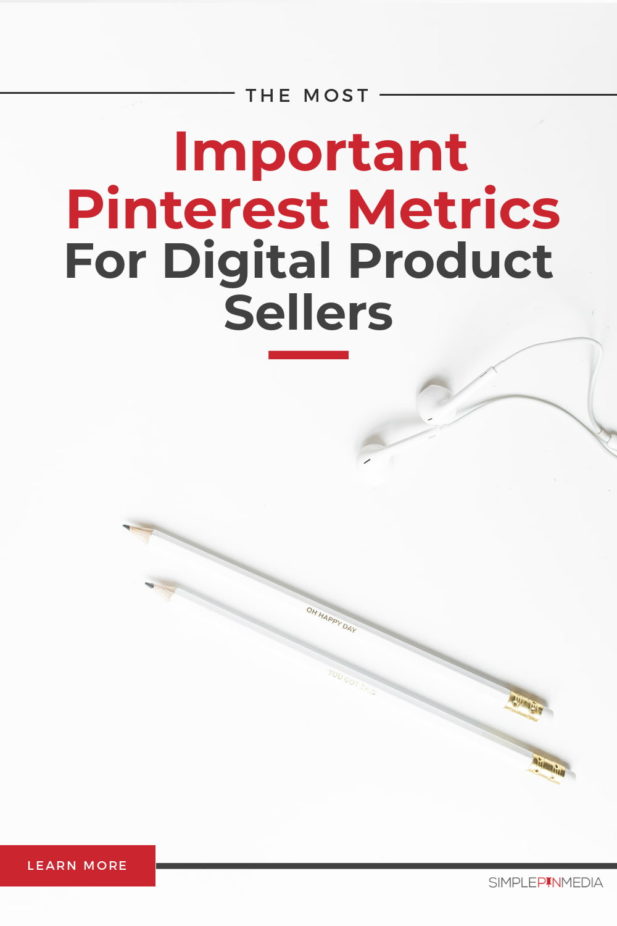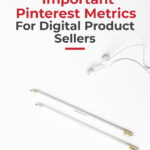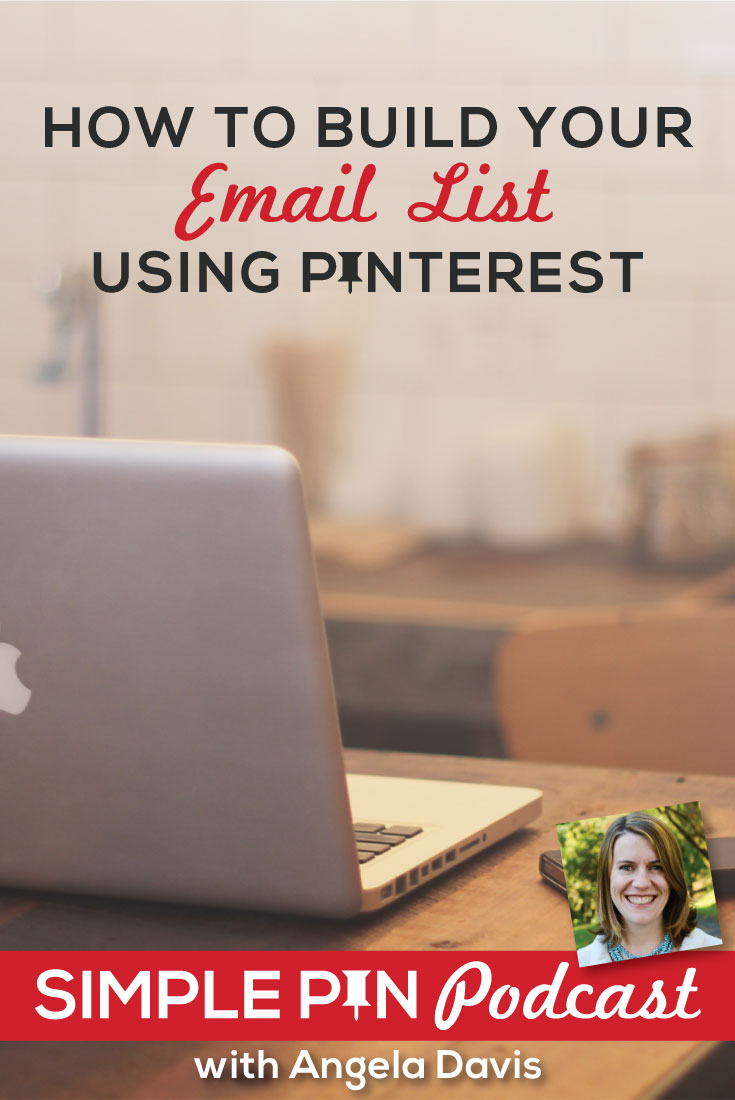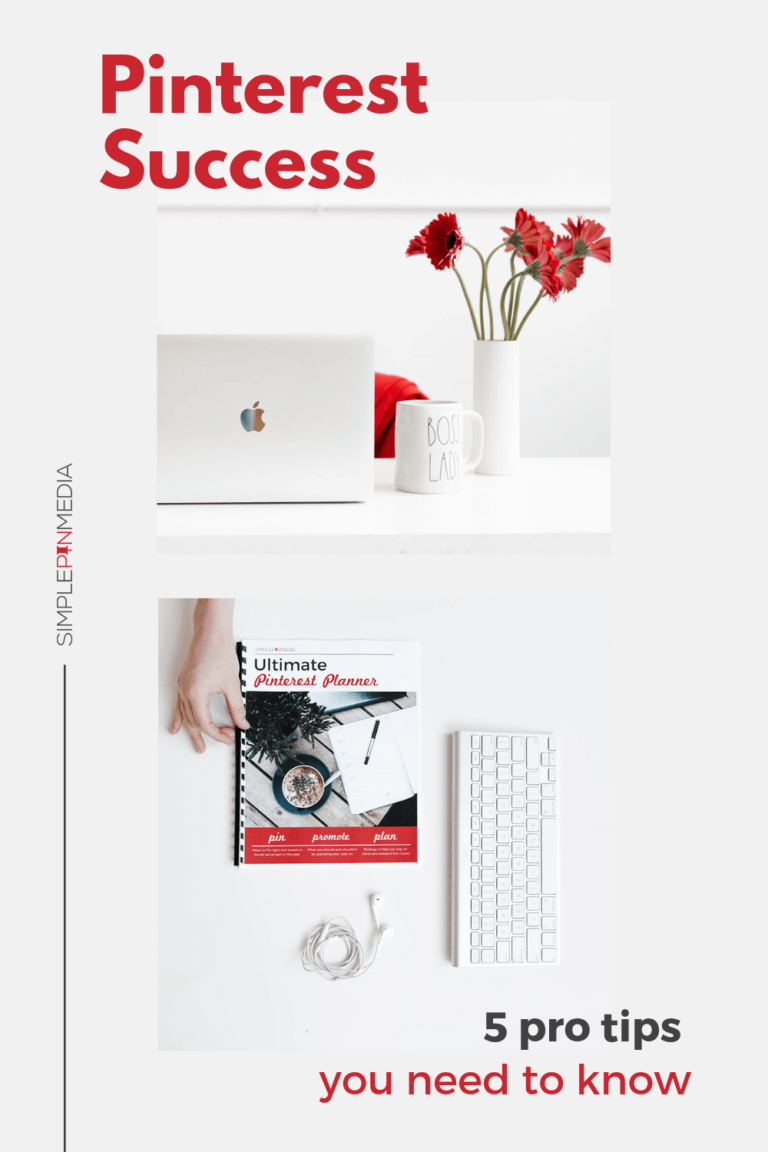Today we’re going to be talking specifically to those of you who sell digital products online (or plan to in the future). There are two business metrics that you MUST pay attention to in order to succeed as a digital product seller — email list growth and conversions.
My guest gives us a great formula for figuring out what type of conversions and sales you need based on your email list size.
I am a big fan of email list growth and love using Pinterest for that reason. It’s the number one reason I use Pinterest for SPM. One of our main opt-ins to get people on our email list is our Simple Pin Pinterest Planner.
It gives people something really powerful that will help their Pinterest marketing. With 20 pages of monthly trends, stat tracking, checklists, and more, it’s an amazing resource but it’s not overwhelming.
And each year, this planner gets a complete update. If you haven’t done it yet, get the planner today.
Dream Business = Dream Lifestyle
Gemma Bonham-Carter helps online entrepreneurs create, launch, and scale their digital products so that they can create a new revenue stream in their business.
After years as a lifestyle and home decor blogger, Gemma began to speak at conferences. People in the audience kept asking her questions about how she had started selling products as a blogger.
It didn’t take her long to realize that answering those questions on an online platform would allow her to reach many more people. So she launched her first course without any real strategy and opened the doors to the potential of both the income and the impact that was possible through these digital product offerings.

What Is a Digital Product Seller?
A digital product seller is anyone who creates and sells any type of product that is delivered digitally.
When most people hear this, they immediately think of courses. But there are a variety of online digital product sellers in many different niches. Membership programs, templates, PDF downloads, audio files, and even group coaching programs are all digital products.
Generally, we see service-based entrepreneurs who realize that, number one, they don’t want to grow an agency, and number two, they eventually hit an income ceiling just selling one-to-one services. They come to Gemma to create a digital offer so that they can serve more people while continuing to grow their income.
Two Metrics to Focus On If You Sell Digital Products Online
Because so many people come to digital product sales from different avenues, it can be easy to become focused on vanity metrics. What key performance indicators you be looking at?
Vanity metrics are things like your follower count on Instagram or the number of people in your Facebook group, or even the traffic to your site.
If you’ve built up an influencer or blog-based business, those are numbers you’ve probably been paying attention to.
When you’re shifting into selling digital offers, you have to let go of that focus. Those numbers aren’t what will drive sales.
As digital product sellers, there are two main numbers you need to be focused on:
1. Email list subscribers. You can have a large number of subscribers, but what really matters is their engagement. Your email list is your golden ticket to a profitable digital product business. You can grow an email list using the platforms you love (Instagram, Facebook, and Pinterest).
2. Conversion rates. This might not be something you’ve thought about before. You might have thought about your conversion rates on a landing page that has an opt-in. You can take the industry average conversion rate for digital products (which is 2%) and use that to your advantage.
Calculating Your Numbers
These two numbers, (email list subscribers and your conversion rates) will help you map out and predict the number of sales and revenue you can expect. You can calculate this with this formula:
Your number of email list subscribers x .02 = the total number of expected sales.
For example: if you’ve collected 500 email list subscribers, you can expect to make 10 sales. If you’re selling a $100 product, you will make $1,000.
This gives you a really clear idea of how many sales you have to make to reach your revenue goals.
You may have a higher conversion rate, and there are a lot of things you can do to increase that conversion rate, but this gives you a base formula to use.
Seeing The Numbers In Black and White
When Gemma entered the digital product industry, she made lots of mistakes in the beginning.
Luckily, she loves to learn and take courses. But she suffered from information overload because there were so many different course and she tried to take them all!
When she started to see her email list grow as a result of several of her strategies, the direct correlation to her income was clear as day. As her email list subscriber base grew, her sales grew.
As this became more obvious over time, it gave Gemma a sense of freedom in releasing all of the other strategies she was attempting to master. All of the overwhelm and anxiety she experienced when attempting to do all the things went away. As long as she simply focused on growing her email list, she continued to experience more and more success.
Higher Ticket Products
One thing that helped Gemma be so successful right out of the gate was that she started out with a higher ticket offer.
When she released her second course, she had learned a lot about strategy and marketing digital offers. She knew how to create a great offer and the value she was providing. So, she priced it at $49.
This benefitted her because she could quickly see traction in her income growth. As her email subscriber base grew, she could layer in some lower ticket offers because of the volume of sales she now had.
If you’re someone who is needing to make an income quickly from digital offers, always go the route of having a higher ticket product.
It’s easier to make 10 sales than it is to make 100 sales. You can layer in additional offers as it begins to make sense for your business.
Creating Results for Your Clients and Students
It’s so important to be focused on getting results for your clients and students enrolled in your digital courses. If that is what you’re most focused on, you will end up creating an incredible product.
You will be working to help your clients achieve a transformation. The more focused you are on that, the less worried you will be on whether or not you’re doing enough.
“People are not buying your product because there are 50 video lessons as opposed to 15 video lessons. They are buying your product because they want a solution to their problem and they want the transformation that they know is possible through your course.”
Once you start to get students through the door and you start to see testimonials documenting their success, your fear and insecurity around pricing will go away. You’ll begin to see the difference your content is making in people’s lives.
The Importance of Testimonials for Your Digital Product Sales
Most people struggle with under-pricing themselves in the beginning. There’s nothing wrong with starting somewhere and then increasing your price over time.
When Gemma launched her membership, she launched it with zero content. There was not one lesson available to members. She had a plan for what she was going to deliver and that plan is was what she launched with. Her people trusted her enough to buy into what she was promising them.
She launched the membership at a low monthly price point. As she added more content and was able to see where the pain points were and what her people needed, she increased the price of the membership.
When it comes to digital products, people have an inherent distrust of them. These products aren’t something that arrives on your doorstep in an Amazon box. For this reason, social proof in the form of testimonials is so important when it comes to creating digital products.
These testimonials show that transformations that have occurred for your clients/students, and the same is possible for that potential client as well. Put some of those testimonials on your sales page and in the blog post with your offer.
This is especially helpful for Pinterest users who enjoy blog content and are coming to your sales page without knowing anything about you or your products.
Utilizing Lead Magnets to Sell Digital Products
The advantage for new digital product creators coming from a blogging background is that you already understand content marketing.
Related: Do Product Sellers Need a Blog for Pinterest?
You can take your existing blog, find your top posts, and immediately optimize those for email list growth. Put a great lead magnet in the middle and at the bottom of each of those posts.
You don’t have to create a lead magnet for each blog post.
You want one great lead magnet that your reader can’t resist. One incredible lead magnet is much better than 5-10 mediocre ones. This lead magnet needs to be directly related to your paid offer.
If you’re selling a course, membership or digital product bundle, your lead magnet needs to be designed to attract the ideal for that offer.
Your lead magnet should be the first band-aid solution to healing their pain point. Then your larger offer will come through in your email funnel and be just what they’re looking for.
You want your lead magnet to be a quick win for the client. Templates, spreadsheets, planners. These are the type of things that are immediate wins for the client.

This post contains affiliate links, which means if you make a purchase through these links, I may receive a small commission at no extra cost to you. Click here to read my full disclosure policy.
Using Pinterest Marketing to Grow Your Email List
Gemma loves Pinterest. She pins blog content and content from her podcast.
For every podcast episode, she creates a blog post with four Pinterest images.
She also creates 10 pin images a month for everything they talk about. These could be for specific products, a topic they’ve discussed on the podcast, or for their lead magnets.
Ultimately, these images lead to blog posts, the podcast episodes, or the lead magnet landing pages. The main goal is always to get the user to opt-in to her email list.
We love Canva as an image design tool. Grab your 30-day free trial of Canva Pro here!
Gemma uses Tailwind to schedule out her pins and creates as much fresh content as possible.
Her future goal for Pinterest is to dive into using promoted pins. She also looks forward to creating more blog content that provides value for her readers.
Using Pinterest to grow your email list is such a great investment of your time. Pinterest is an evergreen platform, where your content will have long-term growth and not disappear. You are building a legacy machine when you’re focusing on your Pinterest marketing.
Check out Gemma’s Rapid List Building Guide which is all about the strategies you can use to grow your email list. If you happen to be selling an online course or membership and want some help with growing your sales, you can take Gemma’s amazing free class where she talks you through the biggest tips and tricks for growing your business.
For Further Listening/Reading:
- How to Leverage Pinterest to Grow Your Email List
- How to Grow Etsy Email Subscribers with Pinterest
- Reporting Pinterest Statistics to Brands: Key Metrics and Where to Find Them
- Important Pinterest Metrics: Where to Focus Your Attention
FREE Download - Getting Started with KPIs Guide

Learn how to track Key Performance Indicators to measure your business success. Download our FREE printable Getting Started with KPIs Guide








2 Comments